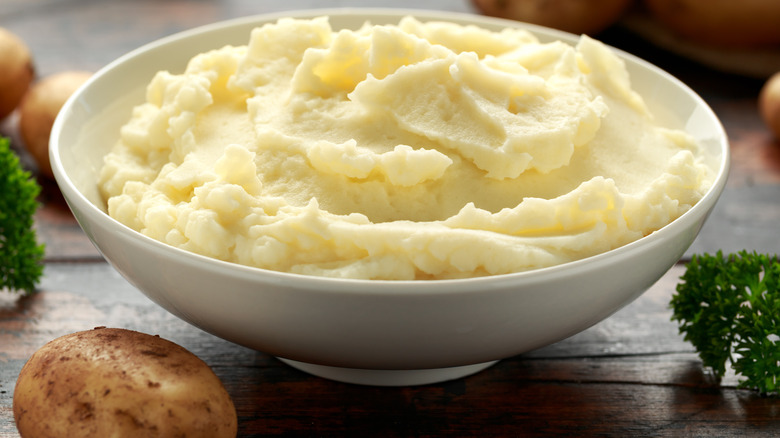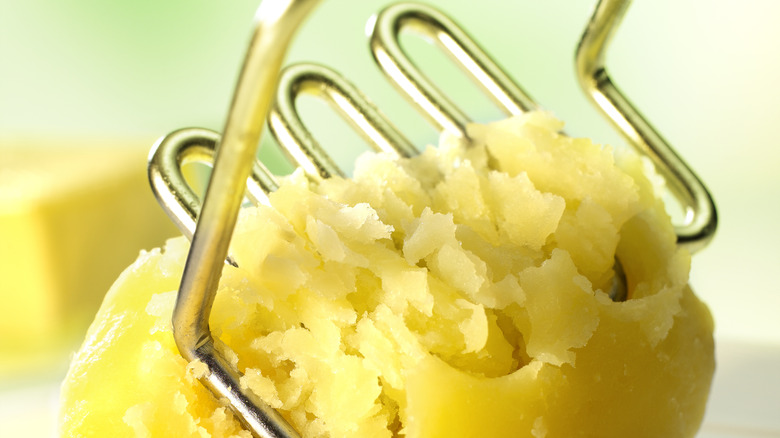Why You Shouldn't Use Cold Milk For Mashed Potatoes
Comfort food comes in many forms, but there's nothing quite as consoling as a warm, creamy, buttery bowl of mashed potatoes. Long a staple of Irish cooking, the mashed potatoes' origin story actually begins in France, according to Irish Central.
As Mental Floss explains, the French believed that potatoes caused leprosy. In 1784, the French government instituted a ban on human consumption, instead using them as animal feed. However, when French military pharmacist Antoine-Augustin Parmentier was captured by Prussian soldiers during the Seven Years War, he was given a diet of potatoes.
Upon his release, and without contracting leprosy, Parmentier extolled the virtues of the humble spud. Per Irish Central, Parmentier became the potato's unofficial spokesperson, even hosting dinners featuring different types of potato dishes, one of which was mashed potatoes. Around the same time, the site notes, English cookbook author Hannah Glasse included a recipe in her 18th-century recipe book "The Art of Cookery." While in the U.S., Mary Randolph featured a recipe for mashed potatoes in "The Virginia Housewife."
The basic mashed potato recipe is deceptively simple, made with boiled potatoes, butter, and milk. However, getting mashed potatoes' creamy, buttery texture right is where art meets science.
The effect cold milk has on mashed potatoes
The key to perfect mashed potatoes is in the mixing, according to Kitchn. It's imperative that the spuds are not overworked. Whether you prefer your mashed potatoes smooth, or hand-mashed for a chunkier dish, handling the potatoes releases starch. The more starch released, the stickier the potatoes become, resulting in a glue-like texture that's hard to swallow.
Approximately 85% of the potato's solid matter is starch, with the rest made up of water (via CooksInfo); it's hard to avoid. Serious Eats recommends washing the potatoes before and after boiling to remove excess starch and to also keep handling to a minimum. They also suggest using a ricer or a food mill to get a smooth mash without the threat of overworking the spuds that a food processor or electric mixer brings.
Southern Living notes it takes a lot of effort for cold milk to absorb into a hot potato. More effort means more mixing. Warming the milk — and bringing any other dairy product, like sour cream, cream cheese, and butter, to room temperature — cuts down on blending so the starch doesn't have time to form a gluey goo. Martha Stewart advises stirring in the dairy until just combined.

